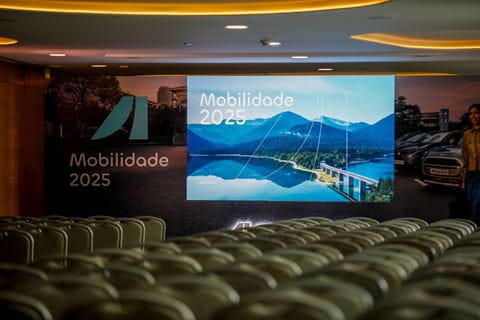
Diesel or electric:
Which is the best option?
The range of 100% electric commercial vehicles is still growing, with more and more options offered by various makes. But is it time to leave diesel engines behind and switch to electric ones?
Here are some tips to help with the decision, including the positives and negatives. The transfer to electric vehicles must take into account several aspects that should not be overlooked.

The reality
Large companies that use commercial vehicles on a daily basis have already switched part of their fleet to 100% electric versions which are driven by an electric motor powered by a rechargeable battery. They are already frequent in European cities and the tendency is for their growth in number in the coming years. Some cities are already limiting circulation in central areas to zero-emission vehicles.
The advantages in terms of local polluting emissions are obvious, but if they are used in the best possible way, they can also represent a cost reduction in the activity of the companies that use them. According to the legislation, which in this area of electrified transport is frequently changing, there may also be several types of benefits for those who exchange a commercial vehicle powered by a combustion engine for another one powered exclusively by electricity.

The choice
The first aspect to take into account is the purchase and with this in mind we need to analyse the cost-effectiveness of switching from a diesel commercial to a 100% electric commercial vehicle.
The second aspect to take into account is the most important: what kind of use will be given to the electric commercial vehicle? If you are going to have daily use on medium and long journeys, choosing an electric car may not be the most efficient. The autonomy provided by the batteries is still limited and, above all, the time they take to charge may entail the immobilisation of the vehicle during the hours when it should be on the road. What’s more, on longer trips you always need to plan the trip carefully, noting the location of the battery charging stations to be found on the route. It is also essential to know what type of stations will be available on a longer journey because as these are fast charging stations, the costs will be higher.
At present, the best use for an electric commercial vehicle will be on urban and suburban routes. Not only because the distances to be covered on a daily basis will be shorter, but also because the efficiency of electric vehicles in the city is greater, compared to their use on the road or highway. Periods of energy regeneration during deceleration and braking are much more frequent in city driving than on the road or motorway. In other words, contrary to what happens with diesel engines, consumption is lower in the city than at a stabilised speed on the road.
An vital aspect with regard to the optimisation of the use of an electric commercial vehicle is the charging of the battery. Cities are receiving increasingly more fast chargers, which are convenient because they take less time to charge the battery, but they are more expensive to use than other options. The best option for charging an electric commercial vehicle is to use a slow charger that charges with alternating current rather than the direct current of fast chargers. It's a longer process, but it's cheaper and can be even more convenient, as long as the necessary conditions are in place.

Wallbox
In logistical terms, the most efficient solution is to have access to a domestic socket or install a wallbox in a private parking space. Ideally, you should even have access to a private parking lot during the hours when the vehicle is not being used and have access, at said parking lot, to an AC charging point. In most cases, the downtime of the vehicle will be at night, when there is thus the opportunity to charge the battery for several hours without the need to use a fast charger, making the process more economical and practical.
With electric vehicles, planning their use is even more important than with diesel engine vehicles. It is essential to know how many kilometres the vehicle will travel per day and compare this value with the autonomy advertised by the manufacturer for the battery, always providing a safety margin for any eventuality.
Unlike Diesel vehicles, where an unscheduled trip can always be easily made, just fill up the tank; with an electric vehicle, charging the battery takes longer and forces you to find out if there are other chargers along the route in case the battery autonomy is not enough to do everything with a single charge.
However, for daily use on short journeys, it is possible that a full battery charge may be enough to use the electric commercial vehicle for several days, without the need for daily charging. As far as charging is concerned, most battery manufacturers recommend charging only up to 80% of the total charge. Not only is it a faster process, as the last 20% always takes longer, but it also contributes to battery life. In any case, nowadays manufacturers offer battery warranties which, in many cases, can be up to eight years or more. An aspect that needs to be confirmed when choosing the vehicle.
And also...
- The driving style
To optimise the use of an electric vehicle, there are other aspects to take into account, for example the driving style that can get the best efficiency out of an electric vehicle, which has some very different aspects from driving a vehicle with a diesel engine. There are several tips that can be followed to get the best out of an electric vehicle, but the most important one is also the simplest: don't press the accelerator pedal too hard.
Unlike diesel engines, with which you need to raise engine speeds to reach maximum torque and for the engine to have the strength to move forward, in the case of electric motors this is not the case. Electric motors provide the maximum torque, therefore the maximum power, right at the start, so it is not necessary to increase the speed of the electric motor a lot to have the maximum power available immediately.
Careful use of the accelerator is essential to save energy. Not just speeding up, but slowing down too. It is when slowing down that the electric motors start to work as generators, regenerating energy. In other words, accumulating electrical energy in the battery. It is thus important to get into the habit of anticipating traffic situations in order to slow down as soon as possible and prolong this energy regeneration phase.
It is also a good idea to explore the driving modes, if available on the vehicle. Using Eco mode is always a good way of saving energy, as it makes the accelerator less reactive, without losing the power needed to move forward.
- The image
The use of an electric commercial vehicle can also be taken advantage of to improve the image of those who use it. Adding a reference to the vehicle to the advertising that may be placed on the vehicle, emphasising that it is an electric vehicle or that it has zero pollutant emissions is always a good option. It transmits to customers and to those who see it pass by the image of an ecologically responsible user or company, an attitude which is highly valued nowadays.





.webp?rev=116e33c4df5f409b9d0b0a6dbb2810ac&mw=480&io=transform%3Afill%2Cwidth%3A480)

